calsfoundation@cals.org
Washington Historic District
Citizens established Washington (Hempstead County) in 1824. The city developed due to its location as a stop on the Southwest Trail. Washington became the seat of Confederate state government in 1863, when Union troops seized Little Rock (Pulaski County), and remained so until the conclusion of the Civil War. It also held the title of county seat of Hempstead County until 1939, when voters chose Hope (Hempstead County) for this designation.
The National Park Service listed the Washington Historic District on the National Register of Historic Places on June 20, 1972. The district included 149 buildings, but only thirty-nine qualified as contributing or individually listed. The boundaries of Washington reflect the historic district boundaries, which measure one square mile. In 1973, the State of Arkansas opened a historic site containing some of this area, which became Historic Washington State Park. The park contains plots of land within the Washington Historic District boundaries and interprets several historic buildings within the town of Washington.
The historic district contains nineteenth-century frame buildings with brick chimneys and foundation piers that reflect construction styles and materials of that period. The one exception, the 1874 Hempstead County Courthouse, displays solid brick construction. In the nineteenth century, picket fences surrounded many of the houses and sidewalks made of boards lined the white sand streets. Fire destroyed many of the nineteenth-century commercial buildings in the 1870s, leaving mostly residential structures.
A few of the original historic district contributing buildings include the following:
1874 Hempstead County Courthouse
The county constructed this courthouse in 1874 between Franklin Street and Carroll Street on Morrison Street to replace the 1836 Hempstead County Courthouse, which the community had outgrown. The same year, the railroad bypassed Washington, resulting in the growth of Hope. The 1874 Hempstead County Courthouse exhibits the Italianate style with its low-hipped roofline, square cupola, overhanging eaves with decorative support brackets, long and hooded windows, and the typical three openings across the front. It has served the community as a courthouse and a school, and currently operates as a visitor center.
Block-Catts House
Abraham Block, who was the first Jewish settler in Arkansas and a prominent merchant, lived with his family in this Federal style house (circa 1832), located on the corner of Jay and Conway streets. The house exhibits typical Federal characteristics in its two-story, side-gabled frame containing five ranked and symmetrically aligned windows across the façade. Edwin Catts donated the house to the Pioneer Washington Restoration Foundation, which later offered it to Historic Washington State Park.
Confederate State Capitol
This Federal-style building, located at the corner of Franklin and Hamilton streets, served as the second Hempstead County Courthouse in Washington and replaced the one-room courthouse also built by Tilman L. Patterson. It became the Confederate State Capitol after Little Rock fell to Union troops in September 1863. Following the Civil War, it returned to service as a courthouse until 1874, when the third Hempstead County Courthouse reached completion. The United Daughters of the Confederacy pursued preservation efforts in 1929, making it the first building in Arkansas to be restored with state funds.
Methodist Church
The Methodist congregation in Washington dates back to 1821. The Trimble family donated the land to build a church. The congregation completed construction of the Greek Revival style building on Franklin Street northeast of the Trimble House around 1861.
Presbyterian Church
The Reverend Alexander Robinson Banks organized the Washington Presbyterian Church congregation in 1849. Around 1850, the congregation constructed a building in which to hold its services; this later burned. A Gothic Revival–style building replaced the burned structure in 1889. A 1907 tornado moved it from its location but did not destroy the building.
Grandison D. Royston House
John Brooks built this house for General Grandison D. Royston around 1845. Royston participated in both the 1836 and 1874 Arkansas constitutional conventions. Greek Revival–style characteristics of this house include the hipped roofline, the pediment above the front porch, the square Doric columns, plain entablature, and narrow line of transom lights and sidelights surrounding the paneled front door. This building remains in its original location at Morrison and Water streets.
Simon T. Sanders Farmstead (a.k.a. Sanders-Garland House)
Simon T. Sanders, who built this house circa 1845, served as Hempstead County Clerk for three decades. The L-shaped house rests on a corner lot. The wide band of trim under the cornice accents the low-pitched, side-gabled roof. The two main entry doors, one facing Lawrence Street and the other facing Carroll Street, exhibit typical Greek Revival elements in the pediment-topped porches that rest on square columns. Sanders’s oldest daughter, Sarah Virginia Sanders, married Augustus H. Garland in 1853 in this house. Garland served as governor, U.S. senator, and attorney general.
Trimble House
John Dyer Trimble built his Greek Revival–style house around 1847 on Franklin Street. The house sits on its original site, displaying a prominent pediment above the front porch supported by square, Doric columns. Rectangular lines of transom and sidelights surround the front door.
The Trimble family occupied the house for over a century with four generations of the family. Original construction included a front hall, a parlor, a dining room, and three bedrooms. Following the Civil War, the family attached the stand-alone kitchen building to the house. Other additions between 1865 and 1951 included two baths, an enlarged porch, and a large bedroom and sitting room. The Pioneer Washington Restoration Foundation removed the additions in the 1980s to produce an excellent example of Arkansas restoration efforts.
For additional information:
Brooke, Steven. Historic Washington Arkansas. Gretna, LA: Pelican Publishing Company, 2000.
Daniel, Annette. “Last Century Scenes Abound In Washington: Authenticity Is Keynote.” Arkansas Democrat Magazine, April 3, 1966, pp. 10, 11.
Haynes, Mary Margaret. “Trimble House in Washington Being Restored.” Hope Express, February 15–22, 1984.
“Washington Historic District.” National Register of Historic Places nomination form. On file at Arkansas Historic Preservation Program, Little Rock, Arkansas.
Williams, Joshua. Washington. Mount Pleasant, SC: Arcadia Publishing, 2014.
Nikki Senn
Arkansas Historic Preservation Program
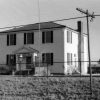

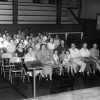

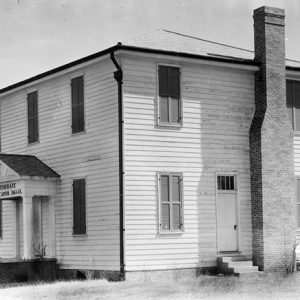
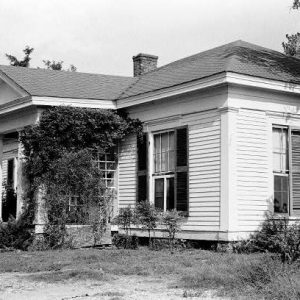
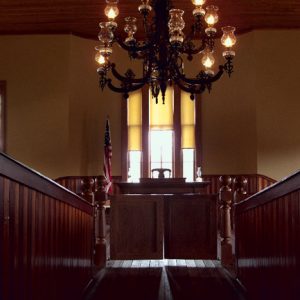




Comments
No comments on this entry yet.